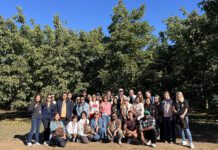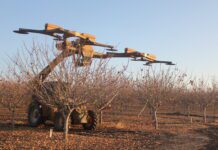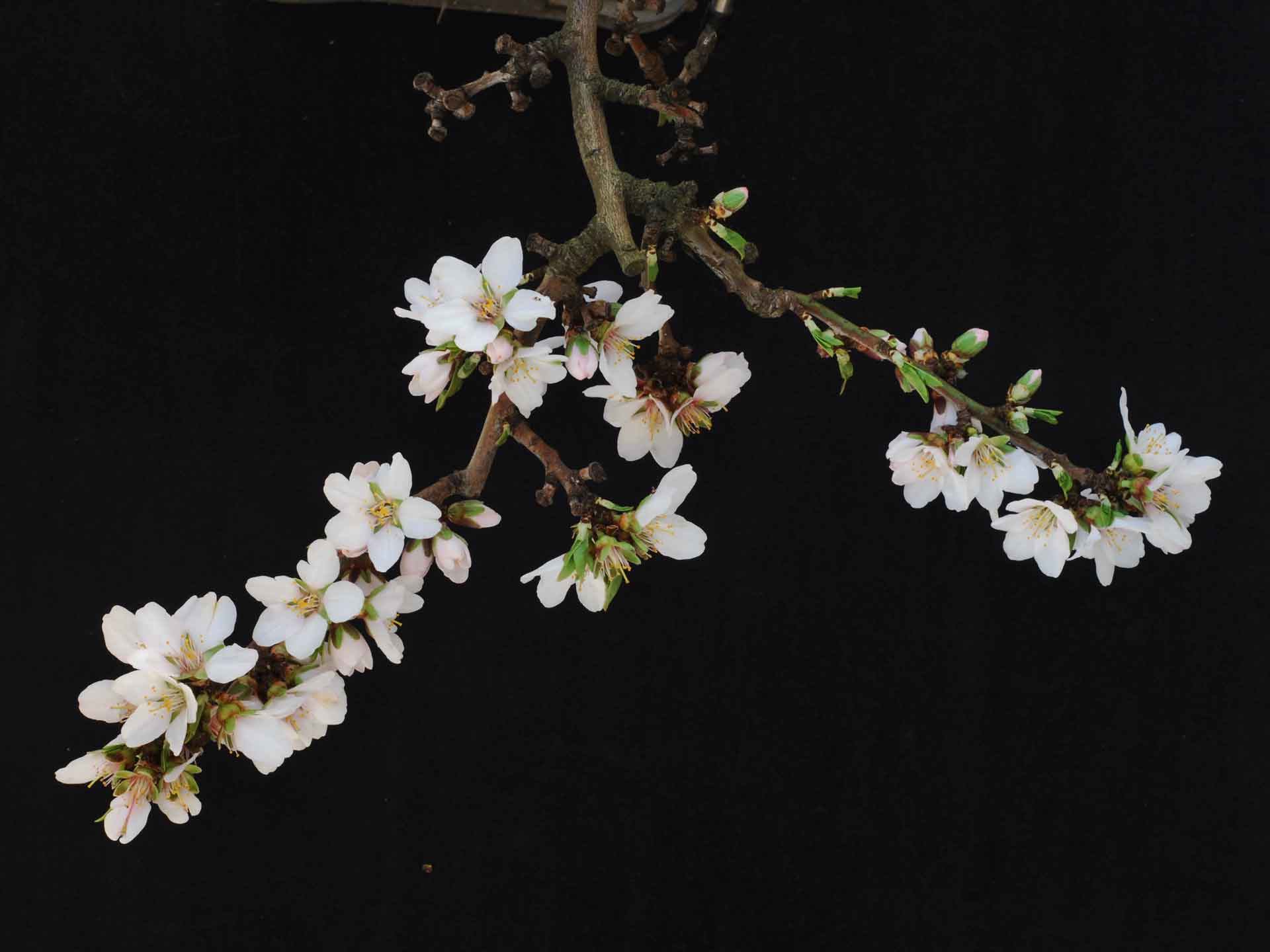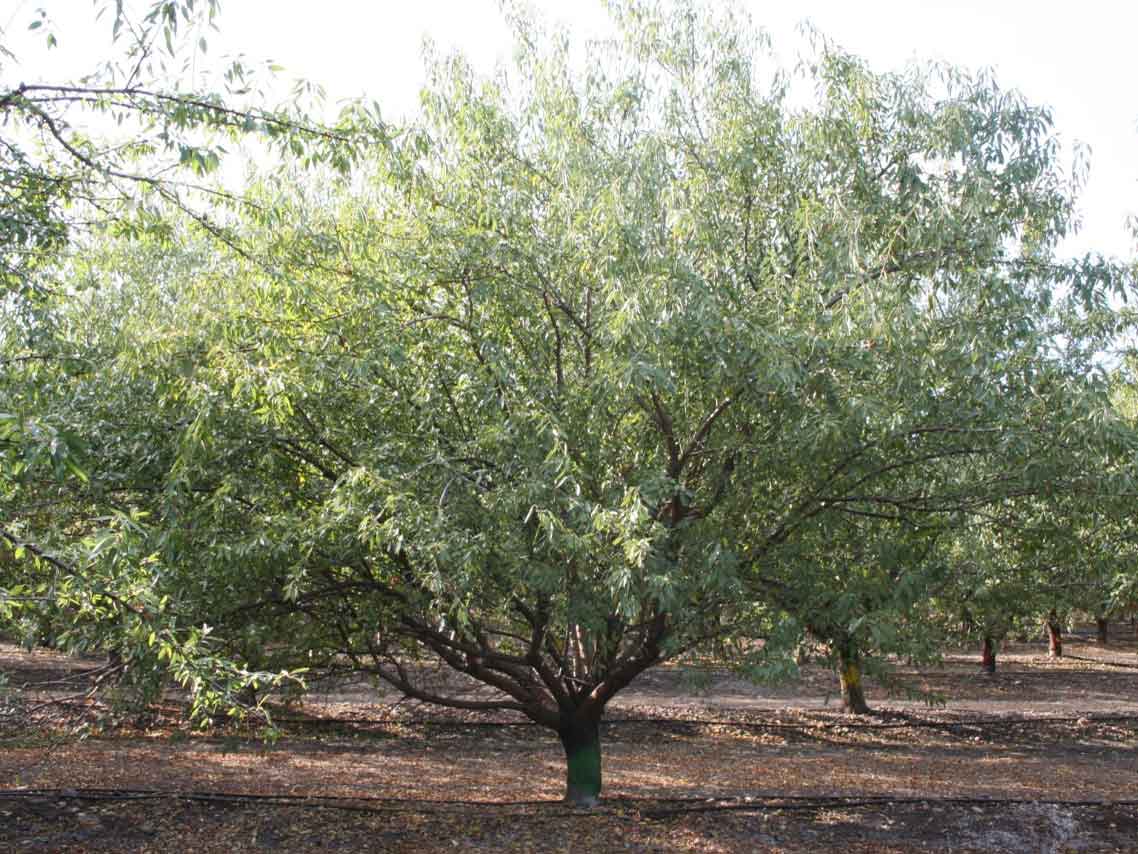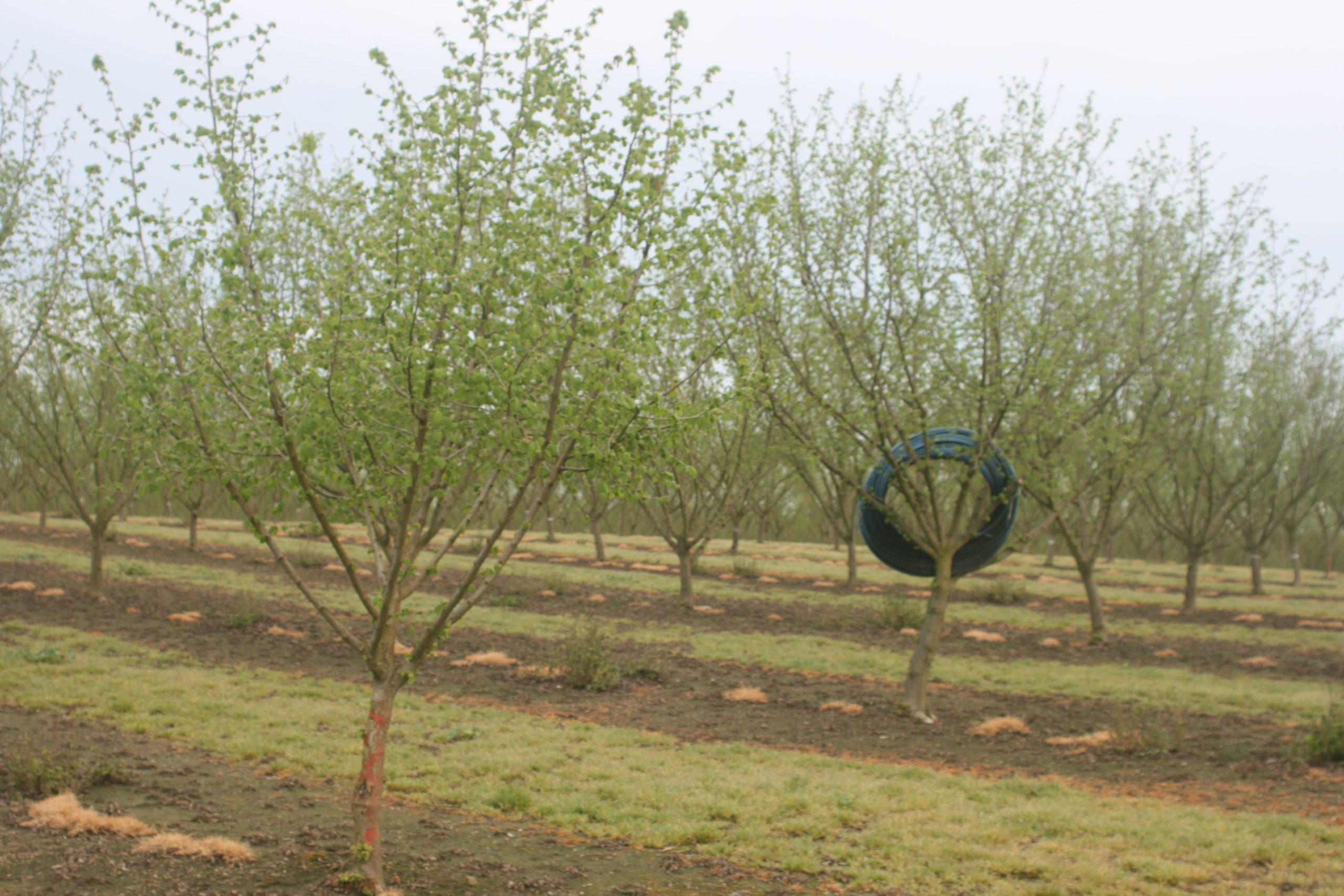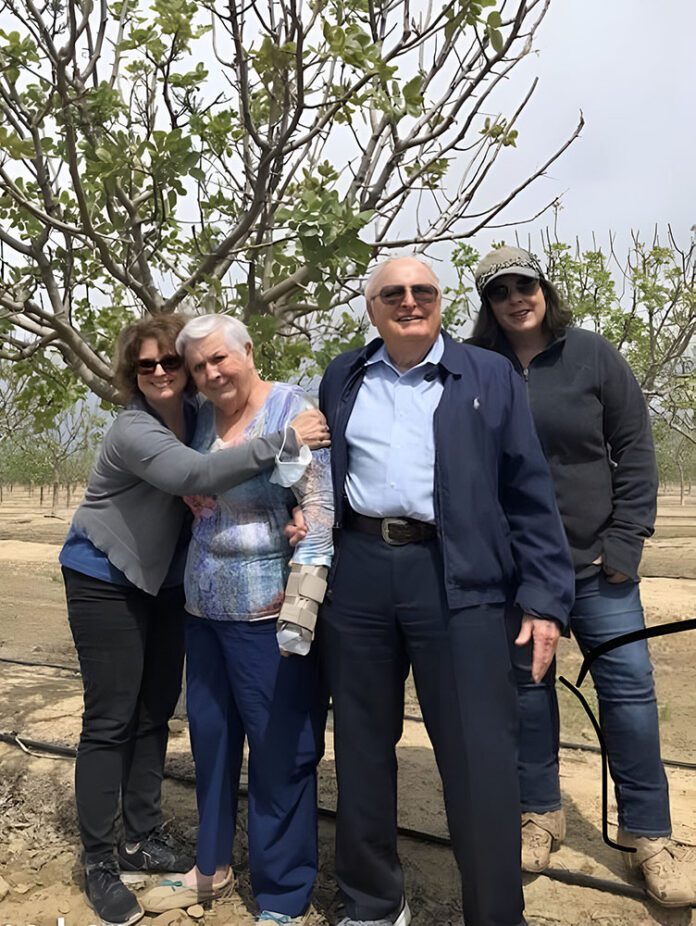
Jean Laborde has been farming since he was 14, but at 91 years old, he’s still learning new things and investing in new ventures. Laborde Land Co. LLC is a family affair with his wife Madonna, and two daughters, Madonna Lang and Jean Marie Silva. Their operation also includes Jonathan Romero and his dad, Arturo Romero, as business manager and superintendent, respectively.
Jean Laborde farmed row crops, citrus and almonds for much of his farming career until a bankruptcy in 1985 pushed him out of farming and into real estate. When a hidden gem of land came available in 2011, he jumped back in, planting 630 acres of pistachios (against the wishes of his wife).
“We were in real estate, and we were doing beautifully in real estate. He promised me he wouldn’t go into farming, and then he bought this land, and I said, ‘No, don’t buy it,’ and he bought it anyway,” Madonna Laborde said with a laugh.
The purchase turned out to be a good one, and now the Laborde family along with Jonathan Romero and his father farm 630 acres of pistachios.
West Coast Nut sat down with Jean, Madonna, Madonna Lang and Jonathan Romero to talk about the history of Laborde Land Co. LLC and the state of the tree nut industry.
Q. What’s the history behind your pistachio orchard?
Jean: I had a listing in Mojave, and the seller approached me to buy the land. I thought maybe it could be a golf course or something else. Instead, what happened is a wind turbine company offered me $9,000 an acre shortly after I purchased the land. I bought it for around $250 an acre. So, that was a home run. I got $9 million off that sale!
That’s when I bought that land for the orchard, and then it was history after that. And we were very fortunate to find people to farm it, like Jonathan’s father. Everything just fell into place.
Madonna Lang: We had originally planted the pistachio trees in 2012 to 2014, but those plantings had to come out because they were diseased. We had to replant the orchard in 2015. Our trees are in their 10th leaf.
Jonathan: Mr. Laborde turned 91 in November, and he’s been farming all his life since he was 14. I’ve been with him since I was 13. His drive for farming and teaching us is amazing. Every day, we learn something new, even at 91. We’re at the farm every day. Jean’s out there seeing what new thing we can do, trying to get into new technology. He loves it, at 91, seeing how much it has changed from equipment to water conservation.
Madonna Laborde: This is Jean’s biggest dream. When he was in high school, he wanted to own 160 acres and plant row crops. He thought if he owned 160 acres, his dream was over. He had a really good dream.
Q. What made you decide to go into pistachios?
Madonna Lang: The land is good for pistachios. Dad was looking at the salinity in the soil and because pistachio trees have a high tolerance for salinity, he knew that pistachios would work well in that soil. Also, there are strong wind gusts at the orchard, and he needed a deep-rooted tree that wouldn’t be pushed over during windstorms. In addition, there was a profitable market for pistachios. He saw the future in it, and he wanted to leave a legacy for his family. Pistachio trees last a very long time.
Q. Madonna, how did you get involved with the farm?
Madonna Lang: I grew up on the farm, and I worked pulling weeds in the summer. I went away to college. After I graduated from college, I pursued a career in business where I worked for several companies. I was responsible for maintaining high sales and gross profit for the companies in which I worked. Coming home to help my dad with the operations of his company was a natural fit. In 2011, my dad called me, stating, “I’m going to plant a pistachio orchard, and I need you to come home so you can learn and help me run it.” He told my sister the same thing.
Working with my dad has been like getting a Ph.D. in business and in farming. I learn from him every day. He has vast knowledge in farming, real estate, business and development.
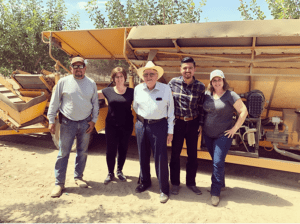
Q. What are some of the biggest changes you’ve seen?
Madonna Lang: The biggest changes are with water. Not only how we work to save water and use every drop that we have, but in our water management. Growers have gone from flood irrigating to drip irrigation. They’ve gone from different ways of calculating weather to having weather stations in the field. The new laws around SGMA (Sustainable Groundwater Management Act) and water sustainability have changed the footprint of water use in California.
Jean: We have a drip system, which we didn’t have before. That’s really amazing because the drip system is right there on the trees, and it’s right along the tree berm.
Jonathan: Another thing is back in 2021, we put in a pipeline. It was a water conservation program that we had, a pipeline through the United States Department of Agriculture. We were limited because we just had water wells at the time, and with laws changing, like SGMA, we were afraid that we were going to be restricted on how much we can pump and must reduce our farming practices. So, we made it a priority to bring in a second source of water and, thank God, we were able to do that through a water conservation program to hook up to our water district.
We put in a pipeline to help reduce our pumping. When there’s water available, we’re able to get water from the district, and we’re not having to turn on our pumps. To turn on water wells is a huge expense, so it’s also helped us save on farming costs.
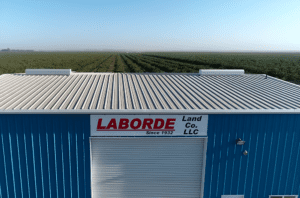
Q. How has the marketing of tree nuts changed over time?
Madonna Lang: We sell our pistachios to Setton Farms. When my dad was growing almonds, he built his own processor, and he would process almonds himself; however, we didn’t sell them ourselves.
Jonathan: I think Setton Farms is a great outfit. Their marketing strategies are amazing. Their number one push is health. They are well staffed by very well-rounded people that know marketing.
Madonna Lang: The other thing I’d like to mention is, not only do, the processors do their own marketing, but Jonathan and I are both involved in American Pistachio Growers, which represents the growers as a large group, and Jonathan serves on the Lead-On committee, and I serve on the Government Policies and Partnerships Committee. We get to see firsthand what they’re doing to market pistachios.
Q. Talk about marketing from the American Pistachio Growers’ point of view.
Madonna Lang: As part of the Government Policies and Partnerships Committee, I’ve learned we’re constantly sending people from that committee and the APG board members to Washington to make sure that our pistachios are able to be sourced out to other countries, and APG does a lot of advocating for us.
Jonathan: Last year, I graduated from the Lead-On class. We focused a lot on marketing. Marketing has gotten more powerful since we first started going to these annual conferences, you’ve seen a lot of change in the marketing strategies. Before, their main thing was health, and they would just push that science.
But now they’re starting to realize that they want to get the newer generations involved and show them how important it is. They’ve brought in a lot of celebrities and athletes that have been advertising for us. For example, Josh Allen, he’s a pistachio grower himself, he was at one of our conferences. He’s always advocating for pistachios and pistachio growers.
Q. What are the three things that keep you up at night about growing tree nuts?
Jean: I don’t worry, I let them do all the worrying.
Madonna Lang: The three things that keep me stressed are the price, the bloom and the summer heat because if the weather’s too hot during bloom, the flower won’t receive the pollen, and in the summer, if it’s too hot, the nut stops filling in the shell.
Jonathan: Water availability is the No. 1 thing for me. Will California be suffering from a drought? Every year is a new challenge. It’s always in the back of your mind. Second is price. We never know what the price is until a week before harvest. I try not to lose much sleep throughout the whole year. I just leave that for the last couple weeks. Third is bloom.

Q. What would you say are the biggest assets of the pistachio industry in California?
Madonna Lang: I would say their advocacy toward our industry is one thing. The other thing is their advocacy for water and their connections with the state and federal government to help facilitate some of the water needs we have locally.
Jonathan: Labor is No. 1. For example, I think pistachios are really heading in the right direction with innovation, with technology. And I think that’s a big asset to us. Also, in my opinion, advocacy. We have great advocates. We have APG that does a lot of marketing for us. You have big guys like Wonderful that even if they don’t sell our pistachios, they’re still advocating for us as pistachio growers.
Q. If you were going to talk to a young person just starting out, what kind of advice would you give them if they wanted to get into growing tree nuts?
Jean: I don’t think they can because unless they have somebody to really help them by financing them, there’s no way, because it costs too much for all the equipment, the land, and there’s a lot of expense.
Maybe it’ll come back someday, hopefully. But a lot of farmers’ children go into farming. And a lot of them won’t because they see what stress it is.
Madonna Lang: It was funny because at the end of high school I took this test. And it said I should be a farmer, and I wanted to be a doctor, so I tore that thing up, and I threw it in the trash before I ever left the room. And now I’ve come back and I’m working with my dad, and I realize, “Oh, my God, this is really wonderful; this life is great.” I think having determination, vision and drive would be what somebody needs to get into farming. They must have somebody encouraging them or somebody to finance them because it’s just way too expensive.
Q. What innovations do you see having a big impact on pistachio growing in the future?
Madonna Lang: There’s a lot of positive changes happening, and it’s all driven by technology. At our recent APG conference, a company named Landscan explained how they can use a program like Ceres Imaging to indicate the pounds per acre a grower can expect to harvest with 97% accuracy. Technology is fast approaching the ability to pinpoint an area in the orchard that can be targeted to produce more pounds per acre by amending it to increase production. An app is being developed whereby growers can scan the meters on their wells and find out their water usage, expected PG&E bills and much more. There’s a lot of automation on the horizon.
Jonathan: I think the technology itself is getting better and better. And with all the SGMA restrictions that are coming upon us, I think that’s going to be more and more important. We’re going to rely more on technology to be able to guide us on the nutrition, the growth cycle, everything that tree needs is going to be at your fingertips via computer.
I think a big change I’ve seen, that’s really happened in the industry, that me and Mr. Laborde got started on four years ago, was planting cover crop. Our seed mix is five different seeds. Each seed has a purpose to it. It’s to help the ground and it helps the trees. We don’t irrigate it at all; that just grows with rain fall.
And since we started that program, our aerial shots of the soil moisture on our ranch, we have never seen it look this good.






